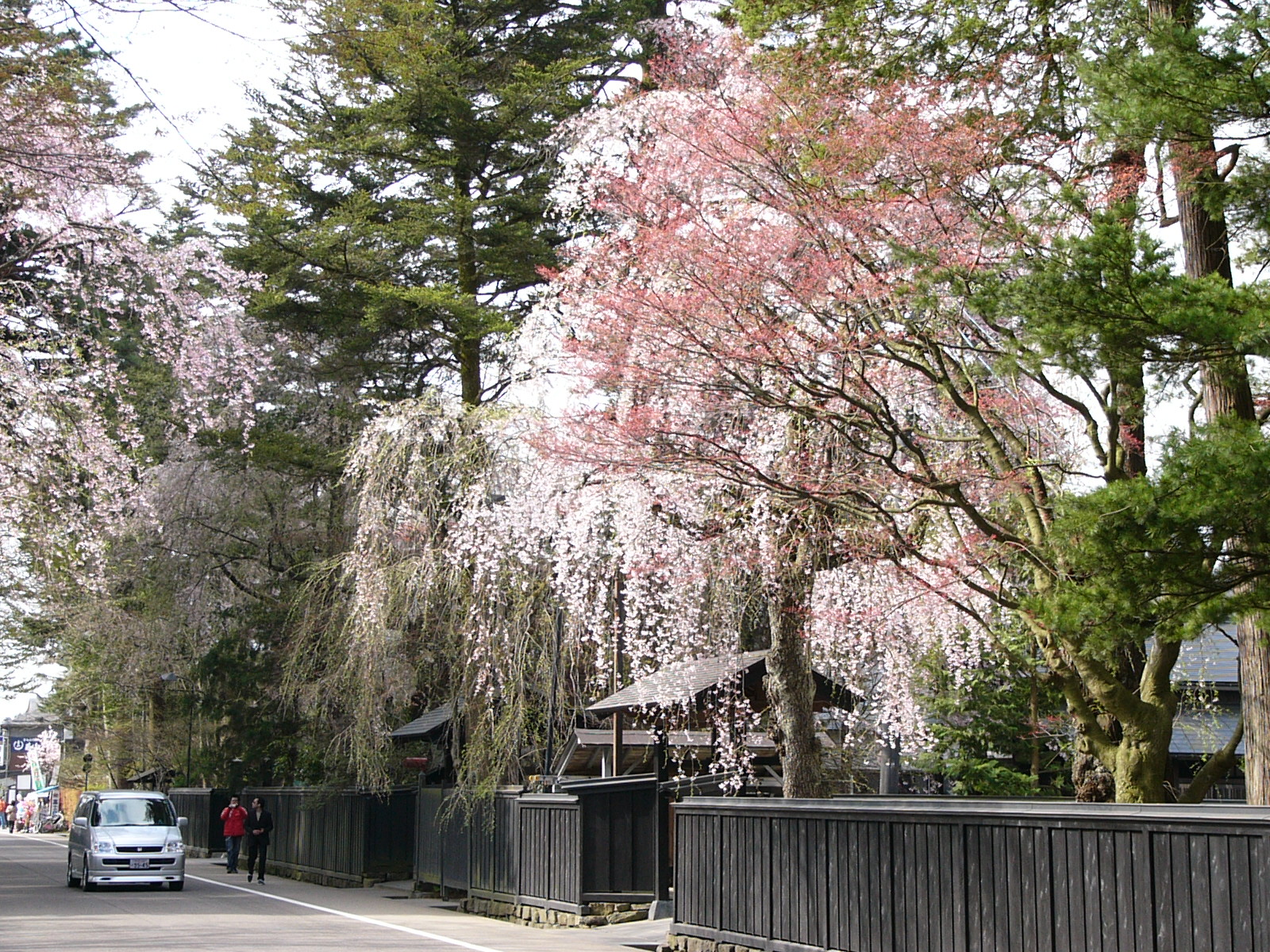|
Norihisa Satake
is a Japanese politician. A former two-term mayor of Akita City in Akita Prefecture, first elected in 2001, he is currently the Governor of Akita Prefecture after winning election on April 12, 2009. He is the 21st head of the North Satake branch of the Satake clan. Life Early life and family Satake was born into the Wainai family, and his biological great grandfather was Wainai Sadayuki. He was later adopted to the North Satake family, a noble family that held the title of baron until 1945, when the nobility was abolished in Japan. The Satake family had formerly served as daimyo (feudal lord) of Kubota Domain. He is the 21st head of the North Satake family. He is a native of Senboku, Akita, formerly known as Kakunodate Village in Senboku District. He graduated from Tohoku University in 1971, with a B.E. degree in Precision Engineering. Career After graduating from Tohoku University, he joined the Akita Prefectural Office in 1972 and held a series of positions until ... [...More Info...] [...Related Items...] OR: [Wikipedia] [Google] [Baidu] |
Akita Prefecture
is a Prefectures of Japan, prefecture of Japan located in the Tōhoku region of Honshu.Nussbaum, Louis-Frédéric. (2005). "Provinces and prefectures" in ; "Tōhoku" in . Its population is approximately 966,000 (as of 1 October 2019) and its geographic area is 11,637 Square kilometre, km2 (4,493 sq mi). Akita Prefecture is bordered by Aomori Prefecture to the north, Iwate Prefecture to the east, Miyagi Prefecture to the southeast, and Yamagata Prefecture to the south. Akita, Akita, Akita is the capital and largest city of Akita Prefecture. Other major cities include Yokote, Akita, Yokote, Daisen, Akita, Daisen, and Yurihonjō. Akita Prefecture is located on the coast of the Sea of Japan and extends east to the Ōu Mountains, the longest mountain range in Japan, at the border with Iwate Prefecture. Akita Prefecture formed the northern half of the historic Dewa Province with Yamagata Prefecture. History The region of Akita was created from the ancient provinces of Dewa Provi ... [...More Info...] [...Related Items...] OR: [Wikipedia] [Google] [Baidu] |
Senboku, Akita
is a city located in Akita Prefecture, Japan. , the city had an estimated population of 25,857 in 10,584 households, and a population density of 24 persons per km2. The total area of the city is . Geography Semboku is located in the mountains of central Akita Prefecture, bordering on Iwate Prefecture and the Ōu Mountains on the east. Lake Tazawa, the deepest lake in Japan, is located in the center of the city borders. Parts of the city are within the borders of the Towada-Hachimantai National Park. Neighboring municipalities *Akita Prefecture **Akita **Kitaakita **Kazuno ** Daisen *Iwate Prefecture ** Hachimantai **Shizukuishi ** Nishiwaga Climate Semboku has a Humid continental climate (Köppen climate classification ''Dfa'') with large seasonal temperature differences, with warm to hot (and often humid) summers and cold (sometimes severely cold) winters. Precipitation is significant throughout the year, but is heaviest from August to October. The average annual temperature ... [...More Info...] [...Related Items...] OR: [Wikipedia] [Google] [Baidu] |
Politicians From Akita Prefecture
A politician is a person active in party politics, or a person holding or seeking an elected office in government. Politicians propose, support, reject and create laws that govern the land and by an extension of its people. Broadly speaking, a politician can be anyone who seeks to achieve political power in a government. Identity Politicians are people who are politically active, especially in party politics. Political positions range from local governments to state governments to federal governments to international governments. All ''government leaders'' are considered politicians. Media and rhetoric Politicians are known for their rhetoric, as in speeches or campaign advertisements. They are especially known for using common themes that allow them to develop their political positions in terms familiar to the voters. Politicians of necessity become expert users of the media. Politicians in the 19th century made heavy use of newspapers, magazines, and pamphlets, as well a ... [...More Info...] [...Related Items...] OR: [Wikipedia] [Google] [Baidu] |
Living People
Related categories * :Year of birth missing (living people) / :Year of birth unknown * :Date of birth missing (living people) / :Date of birth unknown * :Place of birth missing (living people) / :Place of birth unknown * :Year of death missing / :Year of death unknown * :Date of death missing / :Date of death unknown * :Place of death missing / :Place of death unknown * :Missing middle or first names See also * :Dead people * :Template:L, which generates this category or death years, and birth year and sort keys. : {{DEFAULTSORT:Living people 21st-century people People by status ... [...More Info...] [...Related Items...] OR: [Wikipedia] [Google] [Baidu] |
Social Democratic Party (Japan)
The is a List of political parties in Japan, political party in Japan that was established in 1996. Since its reformation and name change in 1996, it has advocated pacifism and defined itself as a social-democratic party. It was previously known as the . The party was refounded in January 1996 by the majority of legislators of the former Japan Socialist Party, which was largest opposition party in the 1955 System; however, most of the legislators joined the Democratic Party (Japan, 1996), Democratic Party of Japan after that. Five leftist legislators who did not join the SDP formed the New Socialist Party (Japan), New Socialist Party, which lost all its seats in the following elections. The SDP enjoyed a short period of government participation from 1993 to 1994 as part of the Hosokawa Cabinet and later formed a coalition government with the Liberal Democratic Party (Japan), Liberal Democratic Party under 81st Prime Minister of Japan, Prime Minister Tomiichi Murayama of the JSP ... [...More Info...] [...Related Items...] OR: [Wikipedia] [Google] [Baidu] |
Liberal Democratic Party (Japan)
The , frequently abbreviated to LDP or , is a conservativeThe Liberal Democratic Party is widely described as conservative: * * * * * List of political parties in Japan, political party in Japan. The LDP has been in power almost continuously since its foundation in 1955—a period called the 1955 System—except between 1993 and 1994, and again from 2009 to 2012. In the 2012 Japanese general election, 2012 election, it regained control of the government. After the 2021 Japanese general election, 2021 and 2022 Japanese House of Councillors election, 2022 elections it holds 261 seats in the House of Representatives (Japan), House of Representatives and 119 seats in the House of Councillors (Japan), House of Councillors, and in coalition with Komeito since 1999, a governing majority in both houses. The LDP is often described as a big tent conservative party, with several different ideological factions. The party's history and internal composition have been characterized by intense ... [...More Info...] [...Related Items...] OR: [Wikipedia] [Google] [Baidu] |
Precision Engineering
Precision engineering is a subdiscipline of electrical engineering, software engineering, electronics engineering, mechanical engineering, and optical engineering concerned with designing machines, fixtures, and other structures that have exceptionally low tolerances, are repeatable, and are stable over time. These approaches have applications in machine tools, MEMS, NEMS, optoelectronics design, and many other fields. Overview Professors Hiromu Nakazawa and Pat McKeown provide the following list of goals for precision engineering: # Create a highly precise movement. # Reduce the dispersion of the product's or part's function. # Eliminate fitting and promote assembly, especially automatic assembly. # Reduce the initial cost. # Reduce the running cost. # Extend the life span. # Enable the design safety factor to be lowered. # Improve interchangeability of components so that corresponding parts made by other factories or firms can be used in their place. # Improve quality contro ... [...More Info...] [...Related Items...] OR: [Wikipedia] [Google] [Baidu] |
Bachelor Of Engineering
A Bachelor of Engineering (BEng) or a Bachelor of Science in Engineering (BSE) is an academic undergraduate degree awarded to a student after three to five years of studying engineering at an accredited college or university. In the UK, a Bachelor of Engineering degree will be accredited by one of the Engineering Council's professional engineering institutions as suitable for registration as an incorporated engineer or chartered engineer with further study to masters level. In Canada, a degree from a Canadian university can be accredited by the Canadian Engineering Accreditation Board (CEAB). Alternatively, it might be accredited directly by another professional engineering institution, such as the US-based Institute of Electrical and Electronics Engineers (IEEE). The Bachelor of Engineering contributes to the route to chartered engineer (UK), registered engineer or licensed professional engineer and has been approved by representatives of the profession. Most universities in t ... [...More Info...] [...Related Items...] OR: [Wikipedia] [Google] [Baidu] |
Senboku District, Akita
is a rural district located in Akita, Japan. At present time (as of June 2013), the district consists of only the town of Misato with an estimated population of 20,771 and an area of 168.36 km2. All of the city of Senboku, most of the city of Daisen and part of the city of Yokote were formerly part of Senboku District. Towns and villages * Misato History The area of Senboku District was formerly part of Dewa Province, and was originally created out of Hiraka District in the year 870. Dewa Province was divided into the provinces of Ugo Province and Uzen Province following the Meiji Restoration on January 19, 1869, with the area of Semboku becoming part of Ugo Province. At the time, the area consisted of one town ( Kakunodate) and 181 villages formerly under the control of Kubota Domain. Akita Prefecture was founded on December 13, 1871. With the establishment of the municipality system on April 1, 1889, modern Senboku District, with one town (Kakunodate) and 37 vill ... [...More Info...] [...Related Items...] OR: [Wikipedia] [Google] [Baidu] |
Kakunodate Village
is a town located in Senboku District, Akita Prefecture, Japan. In 2003, the town had an estimated population of 14,138 and a density of 90.26 persons per km². The total area was 156.63 km². On September 20, 2005, Kakunodate, along with the town of Tazawako, and the village of Nishiki (all from Senboku District), was merged to create the city of Semboku. The town is famed for its well-preserved samurai houses and the proliferation of cherry trees. It is a popular destination for hanami, or cherry blossom viewing. It is sometimes referred as 'the little Kyoto of Tōhoku' (みちのくの小京都 ''Michinoku no sho-Kyōto''). There are the ruins of Kakunodate Castle, and Kakunodate Matsuri is an Important Intangible Folk Cultural Property. This city also hosts a "fire and snow" festival featuring kamakura snow domes each winter. See also *Groups of Traditional Buildings is a Japanese category of historic preservation introduced by a 1975 amendment of the law whic ... [...More Info...] [...Related Items...] OR: [Wikipedia] [Google] [Baidu] |



